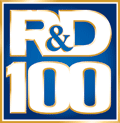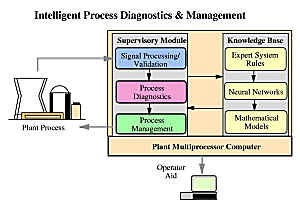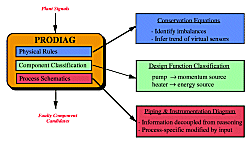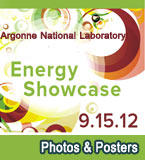Software
PRODIAG
|
|
Brief Description

PRODIAG was named one of the top 100 innovations of 1998 by R&D Magazine, winning a prestigious R&D 100 award.
PRODIAG is a software environment for producing customized diagnostic systems for continuous
thermal-hydraulic (T-H) processes. Diagnostic systems developed with PRODIAG perform on-line,
real-time monitoring of the T-H process under consideration. They continuously receive process
signals (such as fluid temperature, pressure, flow, and level) from the plant as input and when off-normal process operating conditions occur, provide as output the identity of the possible component
faults, such as clogged filters and pipe breaks. Intended originally for diagnosing off-normal process
conditions in nuclear power plants, PRODIAG has a wide range of process-industry applications.
It could be of value in the pulp and paper, chemical, and petrochemical industries, for example.
Benefits and Advantages
Current environments for developing diagnostic systems require the user to provide process-specific "diagnostic rules" of predefined anticipated fault scenarios for which the system will react. In contrast, in developing diagnostic systems for specific T-H processes with PRODIAG, the user only needs to provide the appropriate T-H system configuration or schematics of the process components such as the process piping and instrumentation diagram (P&ID). These data are entered through simple modifications of input data files. PRODIAG already provides process-independent "diagnostic rules" that identify unanticipated (unforeseen) process faults. In essence, PRODIAG provides two key capabilities not found in other diagnostic systems. It has the capabilities to
- identify unanticipated (unforeseen) component faults, and
- be ported across different plants and processes.
These two unique capabilities significantly reduce the cost of developing customized diagnostic systems: software development and qualification time is reduced from >700 hours to about 10 hours --a day's work. At the same time these capabilities reduce significantly the possibility of software and algorithm errors while increasing the range of process upsets that can be diagnosed.
Technical Concept
 Intelligent Process Diagnostic & Management Scheme
Intelligent Process Diagnostic & Management Scheme
The unique capabilities of PRODIAG are attained by incorporating the fundamental physical principles of conservation of mass, momentum, and energy that govern the behavior of the process into the knowledge base, by using the functional relationship between the behavior and the design objective of each component of the process, and by reasoning qualitatively through a qualitative physics reasoning approach. When components malfunction, they cease, either partially or completely, to perform their design function which can then be used to identify the fault. The most basic function of components in T-H processes is to provide sources or sinks of mass, momentum, and energy. Thus, once components are classified as sinks or sources of one of these three quantities, their malfunction can be identified through detection of imbalances in the conservation equations. This diagnostic strategy is carried out by structuring these concepts into three distinct but interacting knowledge bases; (1) a systematic structuring of the qualitative form of the macroscopic conservation equations constitutes the Physical Rules Database; (2) a functional classification of generic process components constitutes the Component Classification Dictionary; and (3) the process-specific P&ID information constitutes the Piping and Information Database.
Process symptoms are related to component faults through a three-step mapping, where the three knowledge bases perform the following functions:
- The Physical Rules Database maps the qualitative trends in the T-H signals (e.g., increasing pressure and decreasing flow) into function imbalance trends in the three conservation types of mass, momentum, and energy. For example, it identifies a mass decrease or a momentum increase.
- The Component Classification Dictionary maps the identified function imbalance type and trend into generic faulty component types (e.g., closed valve, pump, and electric heater) whose failure could have been responsible for the identified imbalance; i.e., the inadequate performance of one of the three T-H functions: mass transfer, energy transfer, momentum transfer.
- The Piping and Instrumentation Database containing the process P&ID information is applied to identify specific components from the generic faulty component types; e.g., valve CV-121, pump A, and electric heater B, as the possible faulty component candidates.
 Process symptoms are related to component faults through a three-step mapping
Process symptoms are related to component faults through a three-step mapping
Through this three-step mapping we transform the diagnosis into a function-oriented approach and confine the process-dependent information solely to the third knowledge base. The first two knowledge bases are process independent. Therefore, there is no need to predefine the possible fault scenarios and the diagnostic system can be ported across different processes/plants by incorporating the appropriate P&ID information through modifications only of input data files.
Status
In collaboration with an electric utility, PRODIAG has been tested on a full-scale simulator used to train operators of nuclear power plants. Successful blind tests of PRODIAG performed in different plant processes confirmed the two key capabilities of PRODIAG. By providing to the diagnostic system, through input only, the simulated fault T-H instrumentation signal data and the process P&ID information, PRODIAG was able to correctly identify 95% of the faults within the first 40 seconds into the transient. Plans are to couple PRODIAG with a process management system that will suggest corrective actions and help plant operators plan the recovery process.
Patents
A list of patents related to the PRODIAG software is available. All patents were issued by the US Patents Office.
Last Modified: Fri, May 11, 2012 6:16 PM







